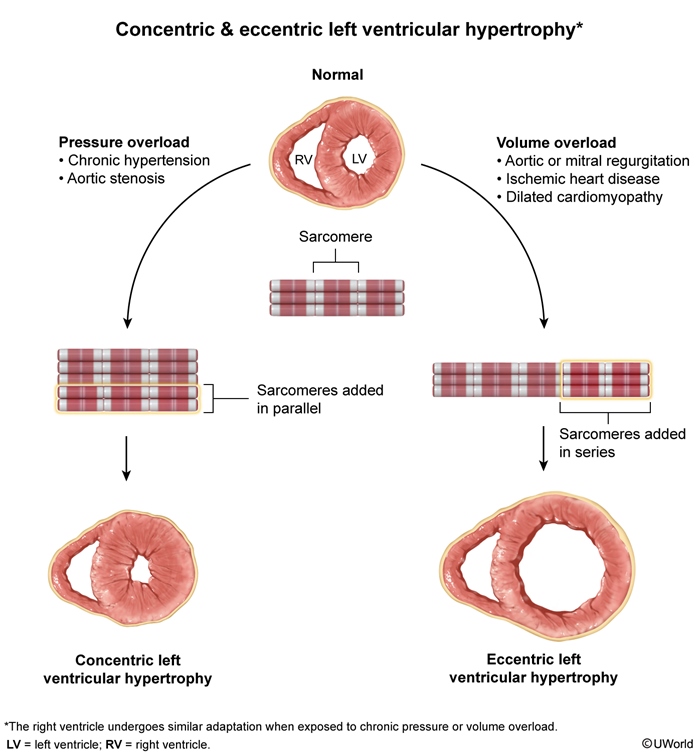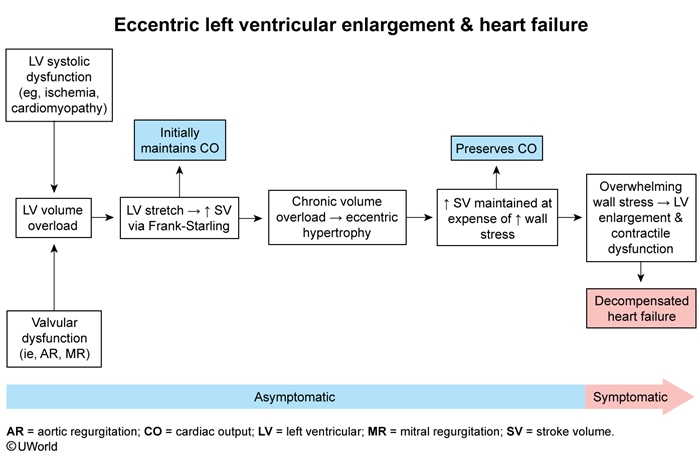Dilated Cardiomyopathy
Article Sections
Introduction
Dilated cardiomyopathy (DCM) occurs due to a direct insult to cardiomyocytes that leads to a decrease in contractile function of one or both ventricles, with a consequent increase in ventricular cavity size. It can result from a variety of causes, including infection, chemical toxicity, and other disturbances; inherited familial patterns may frequently contribute to the disease. DCM is one of the major causes of heart failure with reduced ejection fraction (HFrEF) and is considered a separate entity from other major causes of ventricular dilation and HFrEF, including ischemic heart disease and valvular heart disease.
Pathophysiology
After being subjected to a direct insult (eg, viral infection, toxins), cardiomyocytes can begin to lose contractile function, and a reduction in stroke volume causes left ventricular (LV) volume overload. In response to LV volume overload, LV stretch increases stroke volume via the Frank-Starling mechanism. In addition, compensatory eccentric hypertrophy develops to allow a further increase in stroke volume but at the expense of increased LV wall stress (
Continue Learning with UWorld
Get the full Dilated Cardiomyopathy article plus rich visuals, real-world cases, and in-depth insights from medical experts, all available through the UWorld Medical Library.
Figures

